And the dust collection saga continues. I have a feeling that once I get the dust collection completely setup I might get a new dust collector that will require a change to the entire system. That’s normally the way things go. But anyway, one more shop project before I get back to making actual projects. This time some easy to make blast gates for 4” PVC pipe.
The design for these blast gates calls for a piece of pipe on one side and half of a coupling on the other. This allows them to be used at any PVC fitting which is quite handy as you almost always need to use a fitting to branch off to a machine. Because half of a coupling is required per blast gate it’s naturally fitting that these should be made in pairs. To make one pair of blast gates you will need six 6” x 6” pieces of plywood (any thickness will work), one 4” PVC coupling, one section of pipe that is at least as long as the coupling, a scrap block to use as a handle, and some construction adhesive. Here you can see me doing my best Vanna White impression while showcasing a piece of plywood.
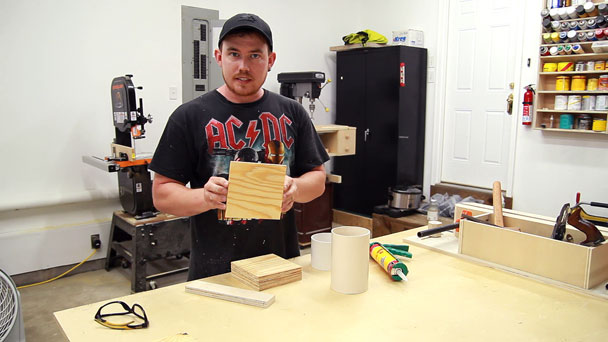
The coupling needs to be cut in half and the easiest method is with the table saw. The miter gauge with a stop block will keep the coupling where it needs to be as you rotate it. You could also use a bandsaw but be mindful of blade drift as the blade my make the resulting cut not quite square.

The pipe is also cut the same way.

With the pipe and coupling cut you can lay them out on the plywood squares. The pipe should be 7/8” from the edges and the coupling should be just shy of ¾” from the edges.
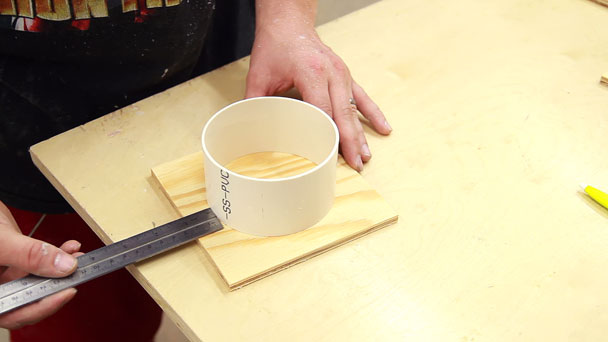
Next, drill a hole through all of the pieces of plywood on the inside of the circle. The hole needs to be large enough for a jigsaw blade.

And rough cut the interior with a jigsaw. Make sure you don’t touch the circle. This will be trimmed up in just a bit.
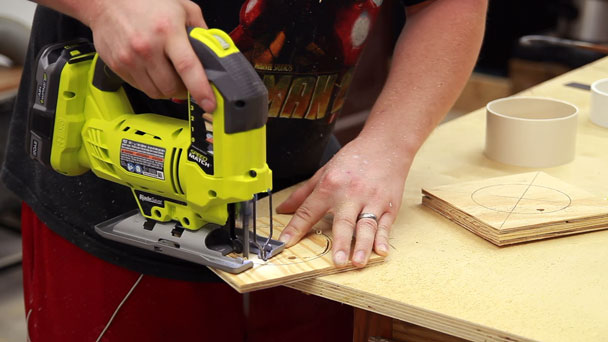
To secure the PVC to the plywood a bead of construction adhesive is used. You will have to roughen up the sides of the PVC with sandpaper first though. That will give the construction adhesive something to grab a hold of. Also make sure the cut side of the plywood is down and the factory edge is facing up. This is important because the coupling has a taper on the inside to make the pipe tighter as it is inserted.
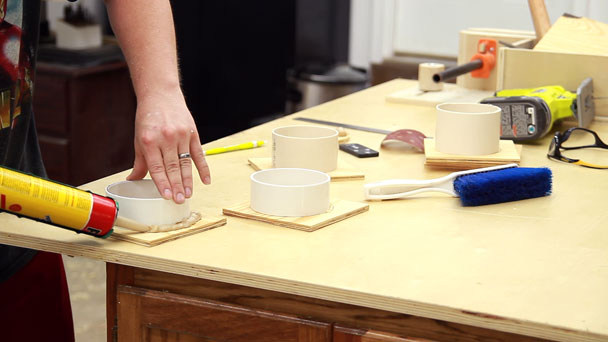
Then smooth the bead of construction adhesive. I used a relatively quick setting construction adhesive so I pretty much made an ugly mess here. A slow setting adhesive would have been a better choice. But looks are relatively insignificant on this project. These will function just they way they were intended to function regardless of how ugly I made them.
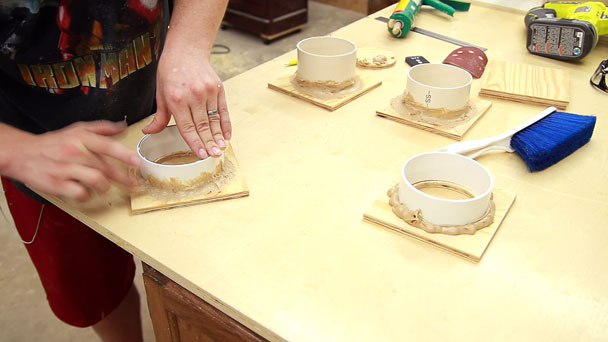
After the construction adhesive has cured overnight the insides can be trimmed with a flush trim bit in a router. I actually just clamped my laminate router into my sliding moxon vise and it worked great.
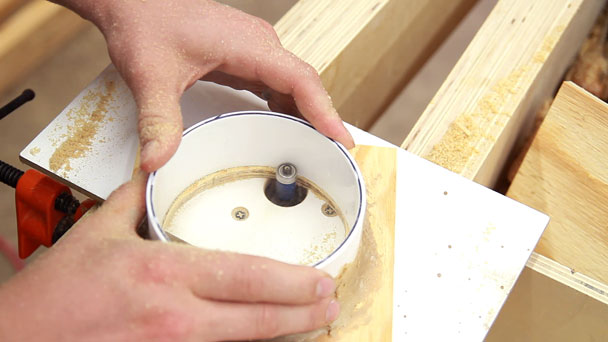
The remaining plywood squares need to be cut. Two 5/8” strips are removed from each square. Then the larger piece is centered on the blast gate and the smaller strips are glued and clamped in place on the sides. It’s a good idea to remove the center section once the strips are clamped down. That way it doesn’t accidentally get glued into place.
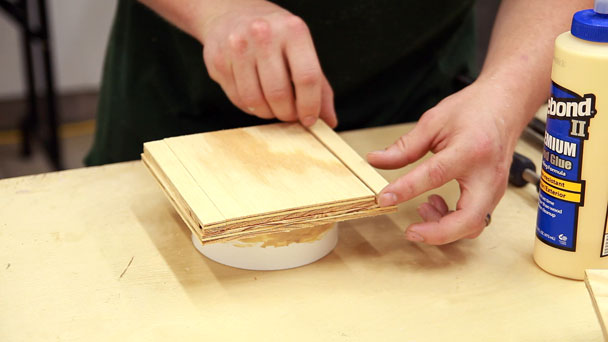
To give the center section, or gate, a handle a dado is cut in the center of a scrap piece of wood. In this case I used a piece of 3/4” plywood. The gate is then glued into place.
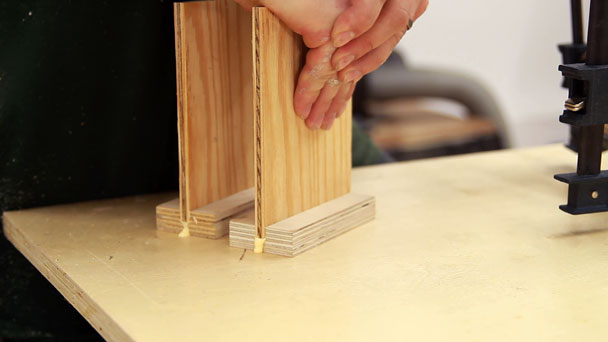
Once the glue has setup on the two smaller strips the second half of the blast gate body is glued on.

Because no shims are used in the construction of the blast gate body the thickness of the gate itself needs to be reduced. I used my ¼ sheet sander for this step and it worked great.
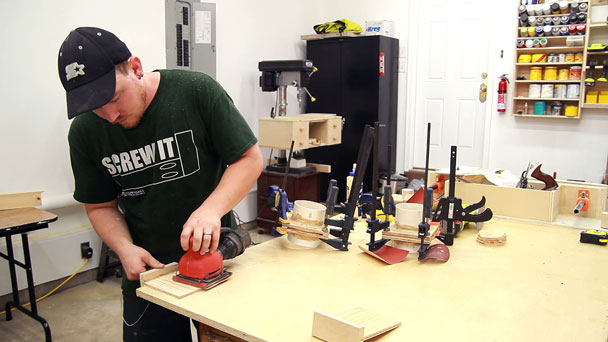
The resulting fit should be smooth without any obstructions. You can also see in this picture that I added a painters tape flap that will cover the other side of the blast gate when suction is applied to the pipe. I used something flexible such as tape so that any debris that may be in the gate path will be pushed out once the gate is closed.

I hope you were able to find this shop project useful and are able to incorporate it into your dust collection setup. If you have any questions, comments, or thoughts on the project I’d love to hear them. Take care folks.

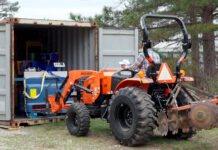

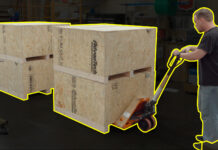
Gr8 vid mate, always well explained. Bon Scott ( original singer) from AC/DC is buried here in Perth Australia, 25 mins from where I live.
Jay,
Great idea that I’ll have to try since my dust collection system consists of a broom and dust pan. One recommendation for you, when trying to smooth out the construction cement (or any glue for that matter) try this: put on a pair of latex free, powder free nitrile gloves (you can get a box of 100 at just about any hardware/automotive store pretty cheap) and spray WD-40 on the the fingers. The gloves will glide right thru the glue making a very smooth seam and you won’t get any of it on your fingers/hands nor will the WD-40 hurt the glue. Trust me at 59 and having used so many different chemicals in my 41 year aircraft maintenance career I have learned the hard way to keep chemicals off my hands/body/lungs, you’ll thank yourself when you are 59 and so will your lovely bride. Keep up the good work, really enjoy your vids I learn something new from darn near everyone of them. Stay Safe!
Hey Jay. Nice solution! Just one comment. I noticed that your PVC dust collection pipe runs in front of at least one outlet. You should seriously consider rerouting the PVC away from the outlet. Yes loosing an outlet in a shop is annoying, but the real reason is static electricity. Dust collectors have the ability to generate a huge amount of static electricity and can actually catch fire. In commercial installations, they are required by code to be in a separate fire rated room or outside. PVC pipe also generates more static than metal. So I would be worried about the potential static electricity arc from your PVC pipe to that outlet. Just a thought and please keep the videos and articles coming.
what stops gate from coming out too far, I didn’t see a stop installed